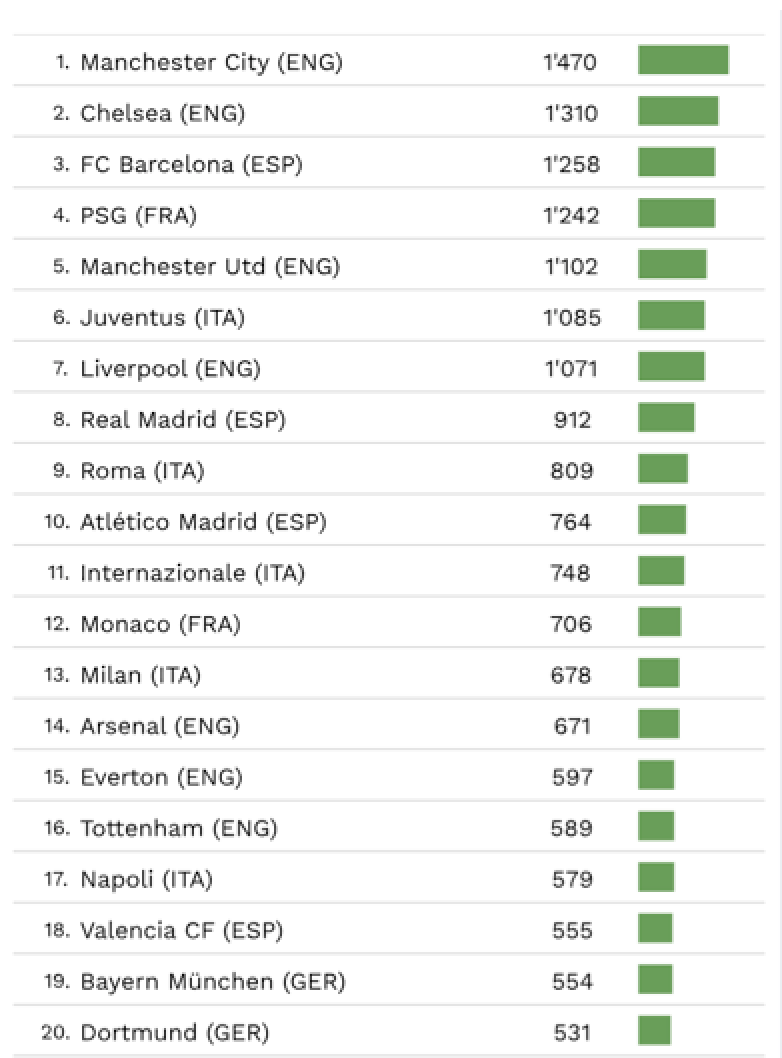It’s no news that the football industry is growing at an exorbitantly rate, but the Global Market Transfer Report has provided new data that confirms this growth.
The total money invested in the transfer market in 2018 is 10.8% higher than in 2017, setting a new all-time record in the amount spent by clubs internationally. The global market witnessed how clubs spent a little over $7 billion, with players like Cristiano Ronaldo (€117), Kylian Mbappé (€135M) or Kepa Arrizabalaga (€80M), the most expensive goalkeeper in the history of football, being in the centre of the transfer stage.
Although UEFA clubs are still the ones making most of the spending in the transfer market, with a 78.2% of the entire worldwide expenditure, other continents such as Asia are climbing steps, with Saudi Arabia jumping to the 7th place as one of the biggest spenders (more than €150M).
Women’s football had to have all transfers processed by FIFA’s International Transfer Matching System for the first time ever and the total spending on transferring players was $0.6 million, confirming that the industry for female footballers has begun its take-off.
These great figures go hand in hand with the continuous increase of earnings that football clubs are experiencing. Premier League clubs, enrolled in the league with the highest income in the industry, have increased their earnings and have now more than five billion Euro in annual income. That is still a big difference from their direct competitor, LaLiga, with almost three billion Euro (€2.85bn).
Many experts are wondering when the football industry will hit the ceiling, a prospect that doesn’t look realistic for now, taking into account the arrival of the Asian continent and its investments in the sector. Clubs have stopped basing their income in the selling of tickets for a while now, but the rights from TV broadcasting aren’t either the most important driving force of income for them anymore. Over the past few years, the focus of many club owners and CEOs has been to find more deals for sponsorship and commercial revenues.
Germany’s Bundesliga has made it clear that it’s a force to be reckoned with and that they should be considered a serious competitor that is close to reach similar numbers in revenue as LaLiga, with €2.79 billion. Serie A maintains itself as the fourth league in the UEFA zone, with €2.07 billion, followed by French Ligue 1 with €1.64 billion.
The revenue from countries like France or Italy may seem low in comparison, but they are only five years behind the Premier League if they follow the same trend –2 billion out of the total Premier League revenue in 2010 came solely from TV broadcasting.
It is remarkable to see that this fast-paced increase in revenue throughout Europe has arrived around the same time UEFA put into practice their Financial Fair Play plan, in the 2011/12 season.
The ever-present vast difference between the “big five” UEFA leagues is also seen in the statistics that show which clubs have spent most of the money in transfers since 2010. There are three Premier League clubs in the top five, with Manchester City ranking first, Chelsea second and Manchester United fifth. A French team, Paris Saint Germaine, and a Spanish one, FC Barcelona, complete the top five list. The first seven clubs spent over a billion euros in this decade, with Real Madrid almost hitting that figure with 912€ million.

We’ll still have to wait some time to see clubs outside Europe enter the list of the biggest 20 spenders in the world, right now filled with clubs from the “big five” leagues.
If the international football industry is reaching such figures, one must wonder where the ceiling would be if issues like piracy were to be eradicated from the industry’s picture, making TV broadcasting revenue increase. This and more topics will be discussed in the upcoming World Football Summit Asia, which will take place in Kuala Lumpur, Malaysia, on the 29th and 30th of April.

